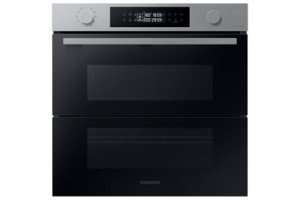Its History Of Built In Oven

The Comprehensive Guide to Built-In Ovens
Intro
Built-in ovens are a staple in modern-day kitchens, combining beauty with functionality. They use a streamlined aesthetic and efficient cooking abilities, making them a favored choice for house owners and cooking enthusiasts alike. This post dives into the advantages of built-in ovens, their different types, key features to consider, installation pointers, and upkeep recommendations, along with frequently asked concerns.
Advantages of Built-In Ovens
Built-in ovens come with a variety of benefits that add to their appeal. Here are some essential benefits:
- Space-Saving Design: Built-in ovens are developed to fit perfectly into cabinets, permitting a more orderly and space-efficient kitchen layout.
- Aesthetic Appeal: They offer a sleek and contemporary look that can enhance the general style of the kitchen.
- Improved Functionality: Built-in ovens typically include advanced features and innovations that support numerous cooking methods.
- Enhanced Cooking Experience: Many built-in models include self-cleaning functions, temperature level probes, and programmable settings, improving the cooking experience.
- Increased Property Value: A well-designed kitchen with built-in appliances can improve the worth of a home.
Kinds Of Built-In Ovens
Built-in ovens been available in a number of types, each created to meet numerous cooking preferences and requirements. Here are the main types:
| Type of Built-In Oven | Description |
|---|---|
| Single Oven | A single, standalone oven for standard baking and roasting. |
| Double Oven | Integrates two ovens in one system, enabling several dishes to cook at different temperatures. |
| Wall Oven | Set up in the wall, maximizing counter area, perfect for small cooking areas. |
| Convection Oven | Uses fans to flow hot air for even cooking, boosting the results of baked items. |
| Steam Oven | Makes use of steam for healthier cooking alternatives, protecting nutrients in food. |
Key Features to Consider
When choosing a built-in oven, a number of functions can affect performance and use. Here are some vital functions to bear in mind:
Cooking Modes
- Bake: Traditional baking with bottom heat.
- Broil: Top heat cooking suitable for browning and crisping.
- Convection: Circulates hot air for even cooking.
- Steam: Uses steam for healthier cooking choices.
Size and Capacity
- Standard sizes usually range from 24 to 30 inches broad.
- Think about the internal capacity-- it can range from 3 to 6 cubic feet, enabling numerous meal sizes.
Controls and Smart Features
- Touchscreen Controls: Easy programming and adjustments.
- Smart Technology: Connectivity features enable remote monitoring and control via smart device applications.
Energy Efficiency
- Search for designs with ENERGY STAR ratings, showing lower energy intake.
Security Features
- Features like car shut-off and kid locks enhance safety throughout operation.
Installation Tips
Installing a built-in oven may require professional help, however here are some basic suggestions to keep in mind:
- Choose the Right Location: Ensure there's enough space in your cabinets for setup, keeping in mind ventilation requirements.
- Electrical Requirements: Check that your kitchen's wiring satisfies the oven's power requirements, specifically for electric models.
- Level the Oven: Ensure the oven is level to promote even cooking.
- Protect the Oven: Attach it firmly to the cabinets to prevent movement throughout usage.
Upkeep Advice
Routine maintenance is essential for the longevity and effectiveness of a built-in oven. Here's how to keep it in top shape:
- Regular Cleaning: Wipe down surfaces after each use and carry out deep cleansing regularly.
- Examine Seals: Inspect door seals for wear and guarantee they preserve an airtight fit to improve energy efficiency.
- Adjust Temperature: If food regularly comes out overcooked or undercooked, consider recalibrating the oven's temperature level settings.
- Professional Servicing: Schedule annual check-ups with a trained professional to preserve ideal efficiency.
Frequently asked questions
What is the distinction between a built-in oven and a freestanding oven?
Built-in ovens are created to be set up within kitchen cabinetry, offering a seamless appearance. In contrast, freestanding ovens are standalone units that generally include their own cooktop.
Are built-in ovens more costly than freestanding models?
Usually, built-in ovens can be more costly due to the included installation costs and advanced features. Nevertheless, built-in double oven and hob packages differ commonly based on brand, size, and performances.
Can I set up a built-in oven myself?
While it is possible to install a built-in oven yourself, it is suggested to work with an expert to ensure appropriate installation, particularly if modifications to cabinets or electrical work are needed.
How frequently should I clean my built-in oven?
It is suggested to clean your built-in oven routinely after heavy use. For deeper cleansings, make use of the self-cleaning function if readily available or occasionally carry out manual cleansing to avoid accumulation.
Built-in ovens are an important addition to any kitchen, providing both aesthetic appeal and advanced cooking abilities. By comprehending their types, functions, installation, and maintenance requirements, house owners can make informed options that boost their cooking experience and enhance the general value of their homes. As kitchen designs continue to develop, built-in ovens will likely remain a popular option for modern-day homes.

